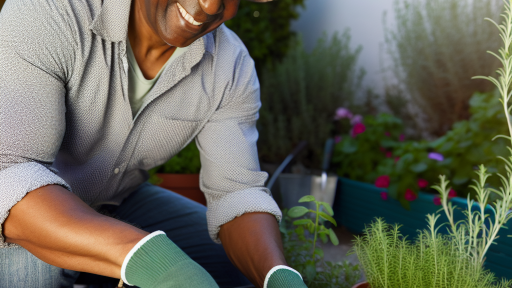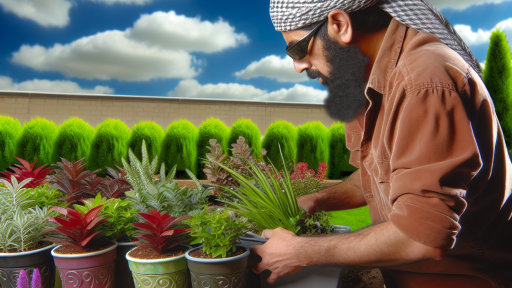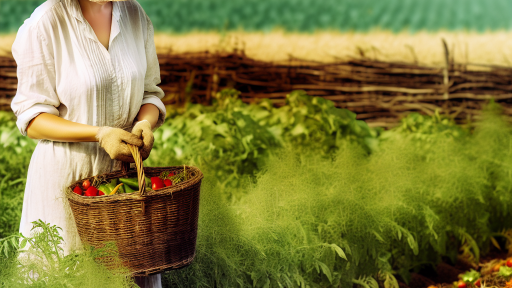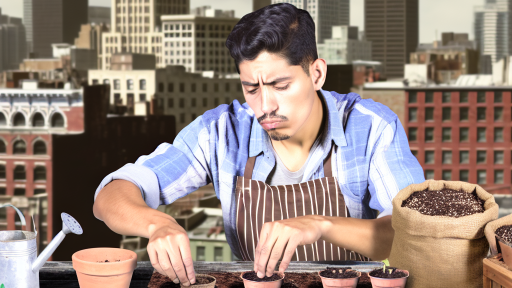Introduction to Container Gardening
Understanding Container Gardening
Container gardening involves growing plants in pots or other containers.
This method allows farmers to optimize space efficiently.
Importantly, it provides the flexibility to grow in various environments.
Farmers can cultivate a range of plants, from vegetables to flowers.
Benefits of Container Gardening
Container gardening offers numerous advantages for farmers.
First, it enables effective use of limited spaces.
Also, it allows for better control over soil quality.
Farmers can choose specific potting mixes tailored for their plants.
Additionally, this method reduces the risk of soil-borne pests and diseases.
Importance for Farmers
Container gardening is crucial for farmers seeking diversification.
It opens opportunities for urban farming initiatives.
Moreover, it enhances accessibility for those with limited mobility.
This approach can improve produce quality through better care and attention.
Farmers can even experiment with growing seasons, extending their harvests.
Choosing the Right Containers
Materials for Containers
Selecting the right material for your containers is crucial.
Transform Your Agribusiness
Unlock your farm's potential with expert advice tailored to your needs. Get actionable steps that drive real results.
Get StartedCommon materials include plastic, clay, and metal.
Each material has its pros and cons.
Plastic containers are lightweight and affordable.
On the other hand, clay pots offer excellent drainage.
Metal containers can add a stylish touch to your garden.
Choose materials that are durable and weather-resistant.
Sizes of Containers
The size of your containers affects plant growth.
Small containers are suitable for herbs and small flowers.
Medium containers work well for vegetables like tomatoes and peppers.
Large containers accommodate bigger plants such as dwarf trees.
Always consider the mature size of the plants.
Ensure there’s enough space for root growth.
Ventilation and Drainage
Good ventilation and drainage are essential for plant health.
Poor drainage can lead to root rot and fungal growth.
Choose containers with holes at the bottom.
Consider adding gravel or stones for better drainage.
Ventilation helps plants breathe and reduces overheating.
Some containers come with built-in ventilation systems.
Choosing Container Shapes
Container shape also influences plant growth.
Round containers are commonly used due to their stability.
Square or rectangular containers maximize space efficiency.
Consider vertical planters for small areas.
Experiment with different shapes to add visual interest.
Aesthetic Considerations
Finally, consider the aesthetic appeal of your containers.
Showcase Your Farming Business
Publish your professional farming services profile on our blog for a one-time fee of $200 and reach a dedicated audience of farmers and agribusiness owners.
Publish Your ProfileYour choice should complement your garden’s design.
Use colors and textures that enhance your plants.
Decorative containers can also serve as focal points.
Choose containers that fit your style and needs.
Soil and Fertilization: Essentials for Healthy Growth
Understanding Soil Composition
Soil composition significantly impacts plant health.
Healthy soil contains a mix of minerals, organic matter, and microorganisms.
Farmers should analyze their soil type for optimal gardening success.
Choosing the Right Soil
Selecting high-quality potting soil is crucial for container gardening.
A lightweight mix promotes drainage and aeration, essential for roots.
Look for soil that contains peat moss, compost, and perlite.
Soil pH Level
Monitoring soil pH helps gauge nutrient availability.
Most vegetables thrive in a pH range of 6.0 to 7.0.
Using a soil test kit can help determine current pH levels.
Fertilization Basics
Fertilizers provide essential nutrients that soil may lack.
Use a balanced fertilizer featuring nitrogen, phosphorus, and potassium.
Apply fertilizers according to the specific plant needs.
Organic vs. Synthetic Fertilizers
Organic fertilizers improve soil structure and stimulate microbial activity.
Examples include compost, worm castings, and fish emulsion.
Synthetic fertilizers provide quick nutrient boosts but may harm soil health.
Timing Your Fertilization
Timing fertilizer applications optimizes plant growth.
Most plants benefit from fertilization during the growing season.
Apply fertilizers every four to six weeks for best results.
Watering Techniques
Proper watering enhances nutrient absorption and plant health.
Consider using a drip irrigation system for optimal moisture levels.
Watering in the morning reduces evaporation and disease risks.
Observation and Adjustments
Regularly observe plant health for signs of nutrient deficiencies.
Yellowing leaves may indicate a nitrogen deficiency.
Adjust fertilization practices based on plant responses to improve growth.
Find Out More: Companion Planting for Edible Landscapes
Selecting Suitable Crops for Container Gardening
Understanding Container Compatibility
Not all plants thrive in containers.
Choose crops that adapt well to confined spaces.
Factors like root depth and growth habit matter.
Consider growth requirements when selecting plants.
Vegetables for Container Gardening
Container gardening works well for many vegetable options.
Some popular choices include tomatoes and peppers.
Leafy greens like lettuce and spinach also perform well.
Radishes and carrots thrive in deeper containers.
Always assess the sunlight needs of each vegetable.
Herbs that Flourish in Containers
Herbs are excellent choices for container gardening.
They can often thrive in smaller spaces.
Showcase Your Farming Business
Publish your professional farming services profile on our blog for a one-time fee of $200 and reach a dedicated audience of farmers and agribusiness owners.
Publish Your ProfileConsider basil, cilantro, and parsley for easy growth.
Thyme and rosemary require less water, making them ideal.
Placement near a sunny window ensures healthy herb growth.
Flowers for Aesthetic Appeal
Incorporating flowers adds beauty to your container garden.
Petunias and marigolds bring vibrant colors to any space.
Consider trailing plants like lobelia for appealing designs.
Sunflowers can also thrive in larger containers.
Select flowers that bloom at different times for variety.
Factors to Consider When Selecting Crops
Think about the local climate before selecting crops.
Some plants prefer warm weather, while others thrive in cool conditions.
Ensure the chosen plants have similar water and light requirements.
Assess the container size to accommodate the plant’s growth.
Finally, consider your personal preferences and culinary needs.
Discover More: Seasonal Seed Saving Guide For Farmers
Watering Techniques: Frequency, Methods, and Troubleshooting
Understanding Water Needs
Each plant species has specific water requirements.
Identifying these needs helps prevent over or under-watering.
Check the soil moisture regularly to gauge hydration levels.
Frequent assessments ensure plants receive adequate water.
Watering Frequency
Watering frequency varies by plant type and season.
Generally, most container plants benefit from watering once a week.
In hotter climates, increase the frequency to every few days.
During cooler months, reduce watering as plants become dormant.
Effective Watering Methods
Several methods exist for watering container plants efficiently.
Using a watering can allows for targeted hydration.
A garden hose with a spray nozzle offers convenience for larger areas.
Drip irrigation systems deliver moisture directly to plant roots.
Best Practices for Watering
Water deeply to promote strong root growth.
Avoid watering the foliage to reduce disease risks.
Consider using mulch to retain soil moisture effectively.
Troubleshooting Watering Issues
Watch for signs of over-watering, such as yellowing leaves.
If plants appear wilted despite regular watering, check drainage.
Adjust watering habits based on weather conditions and plant health.
Common Problems and Solutions
- Compacted soil can lead to poor drainage.
- Add organic matter to improve soil structure.
- Monitor pH levels to ensure proper nutrient absorption.
Consult local agricultural extension services for specific advice.
Utilizing the right techniques can lead to thriving container gardens.
Discover More: Scaling Your Mushroom Farm: Tips and Tricks
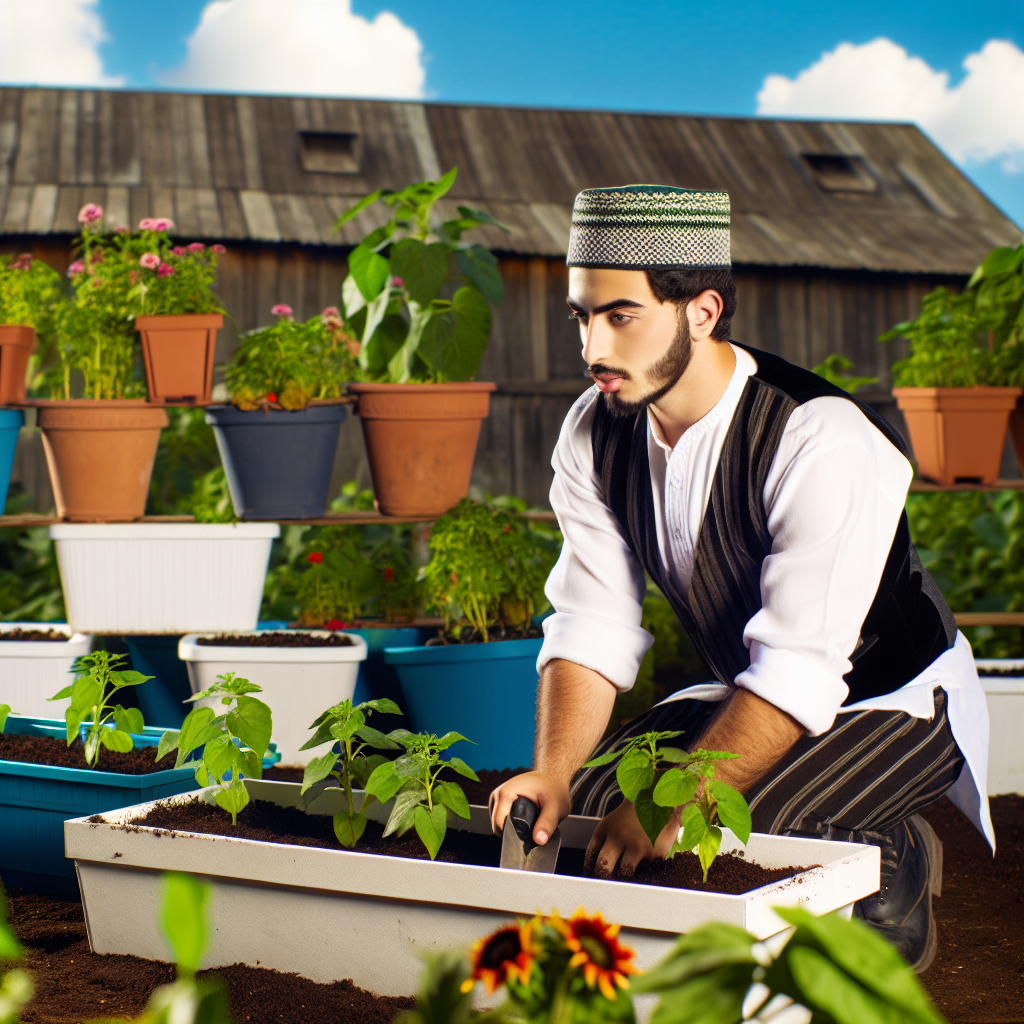
Pest Management in Container Gardens: Organic and Chemical Solutions
Understanding Pest Management
Pest management is essential for successful container gardening.
It helps maintain plant health and productivity.
Farmers must choose between organic and chemical solutions.
Both approaches have unique benefits and challenges.
Common Pests in Container Gardens
Container gardens can attract various pests.
Showcase Your Farming Business
Publish your professional farming services profile on our blog for a one-time fee of $200 and reach a dedicated audience of farmers and agribusiness owners.
Publish Your ProfileCommon pests include aphids, spider mites, and whiteflies.
These pests can quickly damage plants if left unchecked.
Regular monitoring is vital for early detection.
Organic Pest Management Solutions
Organic solutions prioritize environmental safety.
They often involve natural predators and beneficial insects.
For instance, ladybugs and lacewings control aphid populations.
Additionally, neem oil can deter many pests effectively.
Homemade insecticidal soap is another organic option.
- Mix liquid soap with water for an effective spray.
- Apply it directly to affected plants.
Companion planting can also help in repelling pests.
Planting marigolds near vegetables can deter nematodes.
Chemical Pest Management Solutions
Chemical solutions provide quick relief from pest infestations.
They are usually more potent than organic options.
However, farmers should use them judiciously.
Common chemical treatments include insecticides and miticides.
Pesticides must be applied according to label instructions.
- Avoid over-application to reduce resistance development.
- Follow safety precautions during application.
Rotating chemical products can help manage resistance.
Integrated Pest Management (IPM)
Integrated Pest Management combines both organic and chemical methods.
This approach enhances sustainability and effectiveness.
IPM emphasizes prevention, monitoring, and control.
Farmers should start with preventive measures.
Regular inspections can identify potential issues early.
By selecting appropriate control methods, farmers can protect their crops.
This approach helps achieve a healthier garden ecosystem.
Find Out More: Starting Your Own Organic Small-Scale Farm
Seasonal Care: Adapting Container Gardening Practices Through the Year
Winter Care for Containers
During winter, plants in containers need special attention.
First, ensure they have adequate insulation from cold.
Wrap pots with burlap or bubble wrap for protection.
Additionally, consider moving them to sheltered locations.
Water them less frequently, as plants use less moisture.
Monitor for any signs of frost damage regularly.
Spring Preparation
As temperatures rise, containers require some preparation.
Start by cleaning pots to remove any accumulated debris.
Next, refresh the soil with new potting mix.
You should also prune any dead or damaged growth.
Begin planting new crops that thrive in warmer weather.
Remember to water them adequately after planting.
Summer Maintenance
Summer heat can be intense for container plants.
Ensure regular watering, ideally every day during heat waves.
Use mulch to help retain moisture and regulate temperature.
Fertilize monthly to support vigorous growth.
Showcase Your Farming Business
Publish your professional farming services profile on our blog for a one-time fee of $200 and reach a dedicated audience of farmers and agribusiness owners.
Publish Your ProfileWatch for pests and diseases, and act promptly if noticed.
Consider providing shade during the hottest parts of the day.
Fall Transition
As fall approaches, it’s time to prepare for colder months.
Begin harvesting any remaining crops in your containers.
Cut back plants that won’t survive the winter.
Transition some annual plants into a more protected environment.
Consider planting hardy perennials that can endure frost.
Lastly, adjust your watering schedule as temperatures drop.
Harvesting and Storage: Best Practices for Container-Grown Produce
Timing Your Harvest
Start by monitoring the growth of your plants closely.
Observe color changes and size for optimal results.
Different crops have unique indicators of ripeness.
For instance, tomatoes change color as they mature.
Harvest leafy greens in the morning for maximum freshness.
Harvesting Techniques
Use sharp tools to minimize damage during harvesting.
Cut produce with scissors to avoid bruising.
Handle your harvest gently to maintain quality.
Always wear gloves to protect your hands and produce.
Post-Harvest Handling
Immediately cool your produce after harvesting.
Remove any damaged or spoiled items promptly.
Wash your harvest gently with cool water.
Dry them properly to prevent mold growth.
Optimal Storage Conditions
Store your produce in a cool, dark place.
Use breathable bags to enhance airflow and reduce moisture.
Keep fruits and vegetables separate to prolong freshness.
Utilize crisper drawers for optimal humidity control.
Long-Term Storage Options
Consider freezing vegetables for long-term storage.
Blanching before freezing preserves color and flavor.
You can also dehydrate herbs and some fruits.
Canning is another effective method for preservation.
Monitoring Storage Conditions
Regularly check stored produce for spoilage.
Adjust your environment if humidity levels fluctuate.
Take care to manage temperature, especially for sensitive items.
Promoting Shelf Life
Store items that ripen after harvest at room temperature.
For example, leave avocados on the counter until soft.
Use a vacuum sealer to remove air from packaging.
This technique minimizes oxidation and spoilage.
Additional Resources
Vegetable Gardening | National Agricultural Library
Backyard Farming – Guide For Getting Started – Generation Acres Farm

